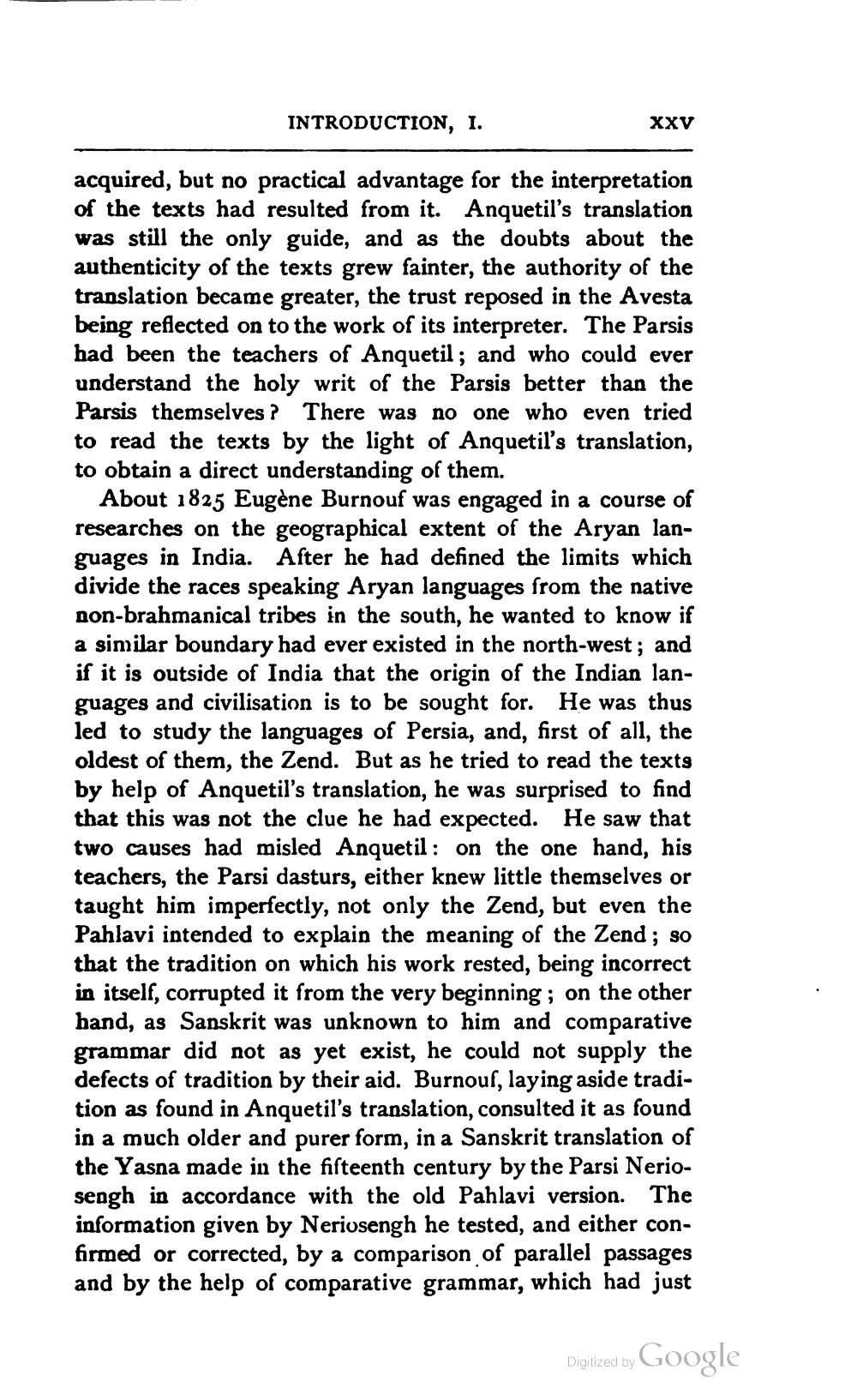________________
INTRODUCTION, I.
XXV
acquired, but no practical advantage for the interpretation of the texts had resulted from it. Anquetil's translation was still the only guide, and as the doubts about the authenticity of the texts grew fainter, the authority of the translation became greater, the trust reposed in the Avesta being reflected on to the work of its interpreter. The Parsis had been the teachers of Anquetil; and who could ever understand the holy writ of the Parsis better than the Parsis themselves? There was no one who even tried to read the texts by the light of Anquetil's translation, to obtain a direct understanding of them.
About 1825 Eugène Burnouf was engaged in a course of researches on the geographical extent of the Aryan languages in India. After he had defined the limits which divide the races speaking Aryan languages from the native non-brahmanical tribes in the south, he wanted to know if a similar boundary had ever existed in the north-west; and if it is outside of India that the origin of the Indian languages and civilisation is to be sought for. He was thus led to study the languages of Persia, and, first of all, the oldest of them, the Zend. But as he tried to read the texts by help of Anquetil's translation, he was surprised to find that this was not the clue he had expected. He saw that two causes had misled Anquetil: on the one hand, his teachers, the Parsi dasturs, either knew little themselves or taught him imperfectly, not only the Zend, but even the Pahlavi intended to explain the meaning of the Zend; so that the tradition on which his work rested, being incorrect in itself, corrupted it from the very beginning; on the other hand, as Sanskrit was unknown to him and comparative grammar did not as yet exist, he could not supply the defects of tradition by their aid. Burnouf, laying aside tradition as found in Anquetil's translation, consulted it as found in a much older and purer form, in a Sanskrit translation of the Yasna made in the fifteenth century by the Parsi Neriosengh in accordance with the old Pahlavi version. The information given by Neriosengh he tested, and either confirmed or corrected, by a comparison of parallel passages and by the help of comparative grammar, which had just
Digitized by Google




